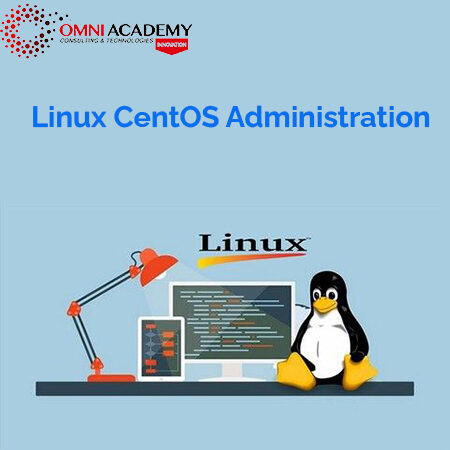Oracle ERP R12 Accounts receivable (AR) refers to money owed by customers (individuals or corporations) to another entity in exchange for goods or services that have been delivered or used, but not yet paid for. Receivables usually come in the form of operating lines of credit and are usually due within a relatively short time period, ranging from a few days to a year.[/vc_column_text]
Navigating in R12 Oracle Applications
- Log in to Oracle Applications
- Navigate from Personal Home Page to Applications
- Choose a responsibility
- Create Favorites and set Preferences
- Use Forms and Menus
- Enter data using Forms
- Search for data using Forms
- Access online Help
- Run and monitor Reports and Programs
- Log out of Oracle Applications
Introduction to Oracle Applications R12
- Explain the footprint of R12 E-Business Suite
- Describe the benefits of R12 E-Business Suite
- Describe R12 E-Business Suite architecture
Shared Entities and Integration
- Explain shared entities within R12 E-Business Suite
- Describe key integration points and business flows between products in E-Business Suite (EBS)
- Identify Key Business Flows and products involved in E-Business Suite (EBS)
Fundamentals of Flexfields
- Describe Flexfields and their components
- Identify the steps to implement a Flexfield
- Define value sets and values
- Define Key Flexfields
- Define Descriptive Flexfields
Fundamentals of Multi-Org
- Define Multiple Organization (Multi-Org)
- Describe the types of organizations supported in the Multi-Org model
- Explain the entities of Multi-Org
- Explain how Multi-Org secures data
- Identify key implementation considerations for Multi-Org
- Define Multi-Org Access Control
- Explain Multi-Org preferences
- Explain Enhanced Multiple-Organization Reporting
- Explain the concepts of subledger accounting
Fundamentals of Workflow and Alerts
- Explain Workflow concepts
- Describe the benefits of Workflow
Procure to Pay Overview
- Describe the procure-to-pay process flow
- Describe the key areas in the procure-to-pay process
- Describe how the procure-to-pay process fits into the Oracle E-Business Suite of applications
- Transaction Taxes in Payables
- Compute transaction taxes for invoices
- Insert manual tax lines and update transaction tax lines
- View tax summary and details
- Identify key reports related to transaction taxes
- Describe setup options in EB Tax & Payables
- Describe transaction taxes in Payables
- Describe treatment of different types of taxes (offset tax, recoverable tax, tax on prepayment, and others)
Withholding Tax
- Identify the withholding tax process
- Use withholding tax options
- Process manual withholding tax invoices
- Create withholding tax on Standard Invoices, Recurring Invoices and Application of Prepayment
- Process automatic withholding tax invoices
RECEIVABLES
Process Invoices Using AutoInvoice
- Describe the AutoInvoice process
- Use AutoInvoice
- Understand error correction using AutoInvoice Exception Handling
Bill Presentment Architecture
- Explain bill presentment architecture processes
- Register data sources
- Create templates to present bills
- Define rules to assign templates to customers
- Print BPA transactions
]Receipts
- Describe the receipt process
- Apply receipts using different methods
- Create chargebacks, adjustments and claims
- Use balancing segments
- Apply non-manual receipts
- Create receipts utilizing different methods
Period Closing Process
- Describe the sub ledger accounting process in Receivables
- Define the various actions required to close a period in the Order to Cash flow
- Describe the available reports to assist in the closing process
- Explain the Create Accounting program and the Revenue Recognition program
Order to Cash Lifecycle Overview
- Describe the overall Order to Cash process from Order Entry through Bank Reconciliation
- Discuss the key areas in the Order to Cash lifecycle
- Describe integration between applications
Manage Parties and Customer Accounts
- Define the features that let you enter and maintain party and customer account information
- Create profile classes and assign them to customer accounts
- Create and maintain party and customer account information
- Merge parties and customer accounts
- Enable customer account relationships
- Define TCA party paying relationships
- View party and customer account information
- Define setup options
Credit Management
- Set up for credit management
- Demonstrate credit profile changes
- Identify credit management processing
- Use workflow and lookups
- Review credit management performance
- Apply credit hierarchy
Implement Receipts
- Enter setup information relating to receipts
- Discuss implementation considerations for Receipts
Overview of Oracle Receivables Process
- Explain where the Receivables process is positioned within the Order to Cash lifecycle
- Describe the overall Receivables process
- Explain the key areas in the Receivables process
- Identify open interfaces to import data into Receivables
Process Invoices
- Describe how the processing of invoices fits into the Receivables process
- Enter and complete invoices
- Perform other invoice actions
- Correct invoices
- Print transactions and statements
- Use event-based management
Implement Customer Invoicing
- Enter setup information related to invoicing
- Discuss the major implementation considerations for customer invoicing
Tax Processing
- Understand the E-Business Tax and Receivables Tax Process
- Define Receivables Setup Steps for Tax
- Manage Tax Accounting and Tax Adjustments’
Final project
Job Interview Preparation (Soft Skills Questions & Answers)
- Tough Open-Ended Job Interview Questions
- What to Wear for Best Job Interview Attire
- Job Interview Question- What are You Passionate About?
- How to Prepare for a Job Promotion Interview
???? Your FREE eLEARNING Courses (Click Here)
Internships, Freelance and Full-Time Work opportunities
Flexible Class Options
- Week End Classes For Professionals SAT | SUN
- Corporate Group Trainings Available
- Online Classes – Live Virtual Class (L.V.C), Online Training
Related Oracle Courses
Oracle Application Development 11G Framework







